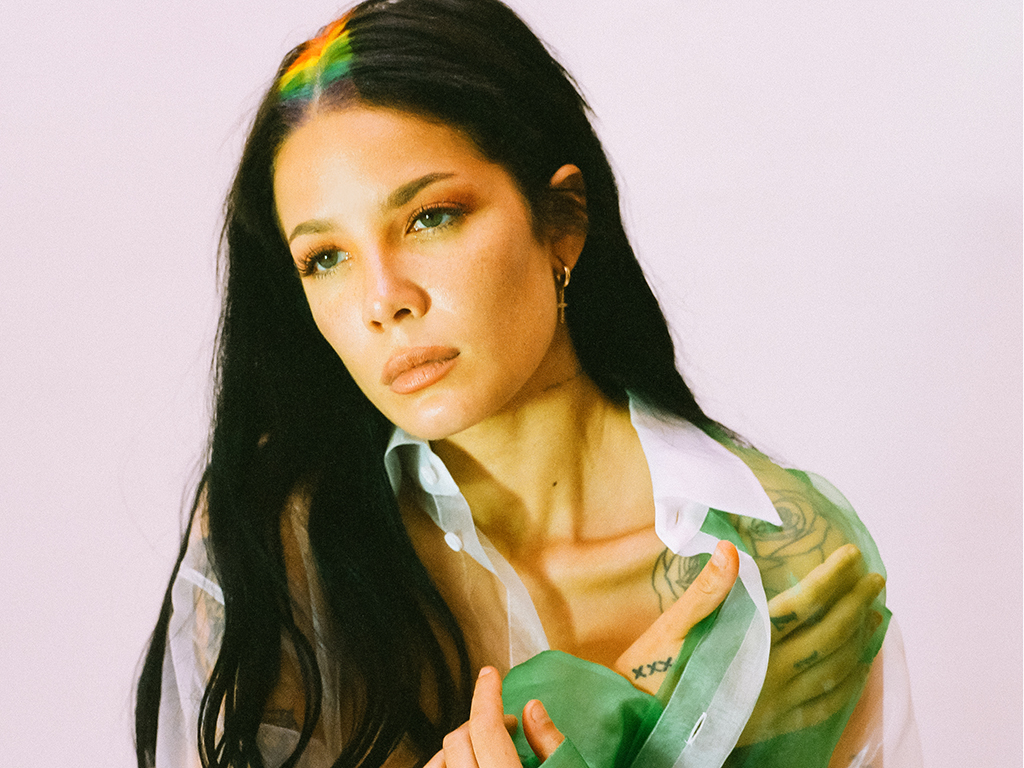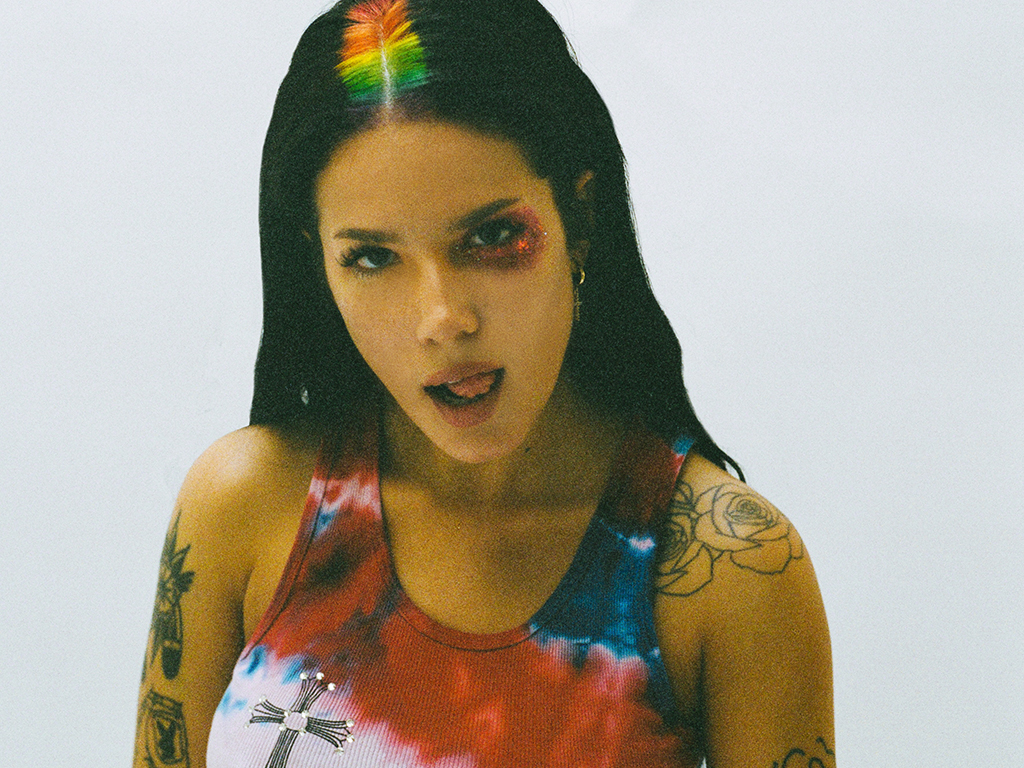After two and a half years of keeping fans waiting, Halsey (real name: Ashley Frangipane) has dropped her third and latest studio album, Manic.

The highly-anticipated record was released Jan. 17 across all platforms, in both digital and physical formats.
Not only does Manic include 10 brand new and original tracks, six singles, two direct movie quotes and four collaborations — with Suga from BTS, Dominic Fike, Chad Smith from Red Hot Chili Peppers and Canadian pop star Alanis Morissette — but it’s a vessel for some of Halsey’s… or Ashley’s… most intimate thoughts to date.
She also enlisted a handful of producers to help display the previously unheard, more vulnerable side of herself.
Ultimately, it’s a journey into the deepest depths of the mind of the troubled 25-year-old. From her inner demons to her haunting past, or her lifelong aspirations to her moments of bliss, Halsey, for the first time in her career, is holding nothing back.
Clocking in at nearly 48 minutes, Manic teaches us a lot about the self-proclaimed anti-popstar. Here are 9 things we picked up on after listening.
It’s Halsey’s most personal release to date
One of the first things the Bad at Love singer said about the album was that it wouldn’t just be Halsey’s third album, but Ashley’s first as well — and in many ways, that’s apparent in the intimacy of her writing.
Manic comes across as more true to herself as a person and not just an artist, because she puts no boundaries on her subject matter; her emotions are completely unfiltered.
She sings about an abundance of troubles: loneliness, heartbreak, withdrawal, depression, physical health, a drug-addicted ex and a fragmented relationship with her own father.
Even upon revealing the album’s tracklist during an Instagram live last month, Halsey admitted: “I feel like you guys have really given me the chance this year to express myself more and be myself in a way that I don’t know.”
She builds upon previous records to improve her newer material
Though the lyrical content mirrors that of her first album, Badlands (2015), Manic is kicked up a few notches thanks to its constant and looming themes of conflict, reflection and self-doubt — which weren’t as omnipresent in her debut.
There are also elements of her sophomore effort Hopeless Fountain Kingdom (2017) there too. Specifically songs like: Graveyard, You Should Be Sad and Without Me — tracks which were written about toxic relationships.
Unlike Hopeless Fountain Kingdom, Manic is not a concept record. There’s no Romeo & Juliet-inspired story encasing her pain and angst, it’s raw through and through, front-to-back, leaving nothing to cover up Halsey in possibly her most vulnerable state.
Manic is quite literally “manic”
From the varied lyrical subject matter of Manic to its unpredictable instrumental elements, Halsey oscillates wildly from one thing to the next — and it somehow works… really effectively?
Whether she’s singing about her well-being, twisted past, struggles dealing with fame or breaking hearts, each individual track has something different to offer. No two tracks can be compared.
The beauty of it is that the album still retains a consistent narrative. Some of the lyrics may collide and contradict themselves at times, but that’s the beauty of the journey through life for someone exploring their 20s.
The musical flow is tremendous.
Thanks to Manic, Halsey cannot be pigeonholed to one genre. This record is her most diverse release to date.
For those who have not yet listened, there’s a bit of something for everyone: Halsey’s trademark pop sound is present, as well as some slowed-down piano ballads. There’s also a punk rock anthem too, and an unexpected and upbeat country track about breaking hearts.
Manic speaks not only to the flaring emotions and feelings inside of Halsey’s head, but to her musical tastes too — which are also shown on her recently released “Is It Manic?” Spotify playlist.
Ashley was born on Sept. 29, 1994, at 9:26 a.m.
Before the album’s final track, 929, Halsey brags to a man — possibly John Cunningham, who produced the track — that she was born at 9:29 a.m. on Sept. 29 in a brief voice memo.
Despite what she says on the song, another subtle voice clip can be heard towards the end of the track. In it, Halsey is laughing.
“I think I have a confession to make. F–k. I’m here to say that I was really born at 9:26. [Laughs] I saw my birth certificate and I’m a liar… I’m a f–king liar. [Laughs]”
The significance? That remains unclear.
Manic might serve as a look into the singer’s battles with bipolar disorder
Though it’s never explicitly said, it seems Halsey might be coming to terms with having bipolar disorder.
Even in the past, she has sung heavily about her mental health struggles, from depression or mood-swings to overwhelming self-doubt and feelings of inadequacy, but the sentiment is amplified tenfold in songs like Forever… (Is a Long Time), Suga’s Interlude and 929.
Halsey was diagnosed with bipolar disorder at 17, and despite her since-found fame, the musician continued to face difficulties with the illness and her dysphoric self-image as reflected upon in Still Learning.
She sings, “I should be living the dream / But I go home and I’ve got no self-esteem.”
Manic was written over the course of two-plus years, so it’s possible these lyrics are all thoughts of the past now, though in retrospect, they do make it evident that the musician has at least been learning to live with those inner-demons while simultaneously working towards self-improvement.
In the last triumphant line of Still Learning, she says “I’m still learning to love myself.”
She uses past relationships to push herself forward
Halsey seemingly looks back on her former relationships too — both good and bad (but mostly bad) — in order to propel herself upwards and onwards in life.
Starting in mid-2017, the singer began dating American rapper G-Eazy. The relationship was heavily publicized — as are most of her relationships — and following their breakup in late-2018, she penned Without Me about the former lover. She admitted it was the first song she’d ever written as “herself,” or as Ashley.
Fresh off the release of the hit, she subtly confirmed it was written about G-Eazy to Beats 1’s Zane Lowe: ”It’s about my relationship that the world has watched so closely and so vehemently in the past year and a half,” she said.
Songs such as You Should Be Sad, I Hate Everybody and Killing Boys reflect on a lost love too, but Halsey never explicitly says who they’re specifically about.
In You Should Be Sad, she sings: ”No, you’re not half the man you think that you are / And you can’t fill the hole inside of you with money, drugs, and cars.”
Whether she often looks back on ex-boyfriends like Lido or Yungblud is unclear, though the latter, whose real name is Dominic Harrison, could perhaps have something to do with Fike’s feature, Dominic’s Interlude, which is a breakup song. After all, the two men do share the same name.
Throughout Manic, the love-based songs are a roller-coaster ride, going from angry and bitter to sad and sombre, all before reaching the blissful and triumphant climax that is Finally // Beautiful Stranger — a sweet and heartfelt love song which Halsey later admitted was written as a “wedding song” during her relationship with Yungblud.
She’s a feminist and proud of it
There are many, many different examples of feminism found in Manic — which is something Halsey’s always been a big advocate of — including snippets taken from the films Eternal Sunshine of the Spotless Mind (2004) and Jennifer’s Body (2009).
Before track two (Clementine) begins, a quote from Kate Winslet‘s character (also named Clementine) can be heard. She says: “Too many guys think I’m a concept, or I complete them, or I’m gonna make them alive. But I’m just a f–ked up girl who’s looking for my own peace of mind; don’t assign me yours.”
Throughout the record, Halsey makes it vividly clear that she doesn’t need men to bring her down — especially when reflecting on her former partner(s).
“Boys are just placeholders, they come and they go,” says Amanda Seyfried (Jennifer’s Body) before the seemingly vengeful track Killing Boys kicks off.
You Should Be Sad sees Halsey boasting about the relief of finally ending a rotten relationship. More simply put, it’s a female-empowering breakup anthem.
If you watch the accompanying music video, you can see Halsey’s tribute to some of her own female idols, including Christina Aguilera, Lady Gaga, Carrie Underwood and Shania Twain.
Even in her collaboration with Morrissette, Halsey sings about putting her foot down against the people, specifically men, who have labelled her due to her sexuality.
“Your p–sy is a wonderland,” the duo sing repeatedly throughout the track, glorifying the feeling of being a powerful and independent woman.
Halsey’s trying to break out of being labelled a “pop star”
If it wasn’t clear enough already from Halsey’s musical approach to Manic, she doesn’t want to be known as the “pop star” she’s been branded as over the years.
The varied background of featured artists on this record, its pick-and-mix selection of producers and its overall genre-fluidity, make it nearly impossible to deny that Manic is a unique creation in itself.
After being mocked for referring to herself as an “anti-popstar,” Halsey took to Twitter last week explaining how she feels about being locked into one specific brand by her fans and critics.
“Part of being an artist is that I can subscribe to whatever brand of myself I wish,” she wrote.
She continued: “Anti-popstar is more about a mentality I think. It’s more about denying the notion that female pop artists should succumb to the social expectations of the genre.”
To label Manic as one specific genre would be as inadequate as it would be to label its ever-changing creator, and it’s evident that since releasing her first two records, as well as the Room 93 EP (2014), that Halsey has matured not only as a writer, but as an artist and person as well.
Manic is now available worldwide through all major streaming platforms.
Physical copies of the record can be purchased through the official Halsey website.
Manic: full tracklist:
- Ashley
- Clementine
- Graveyard
- You Should Be Sad
- Forever… (Is a Long Time)
- Dominic’s Interlude
- I Hate Everybody
- 3AM
- Without Me
- Finally // Beautiful Stranger
- Alanis’ Interlude
- Killing Boys
- Suga’s Interlude
- More
- Still Learning
- 929







Comments